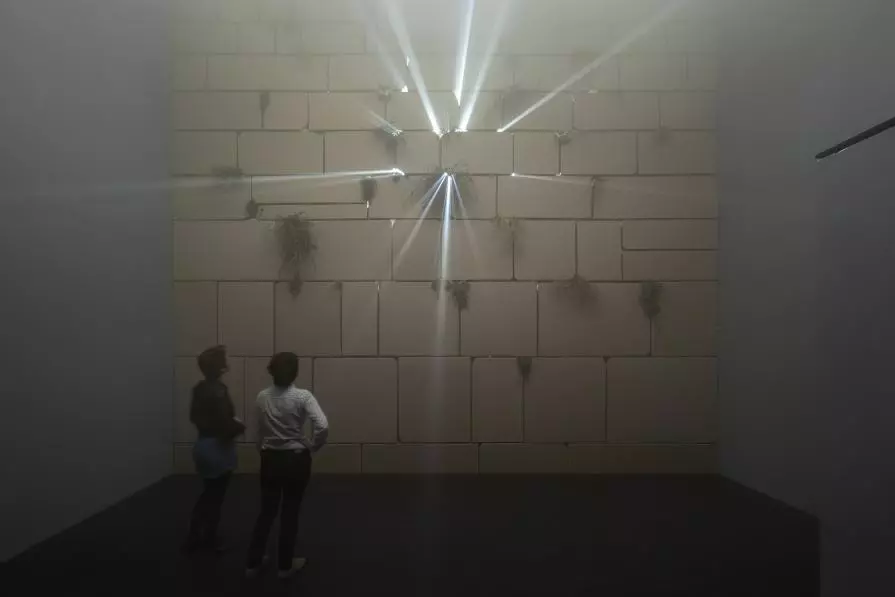Above and Beyond
Installation view at CCA Tel Aviv
Cardboard, natural vegetation, OSB sheets, projections, artificial fog, sound;
Dimensions Variable; Original Score: Yoni Silver, 4:29 min looped
Photo credit: Elad Sarig
For “Above and Beyond”(2013), originally commissioned by the Center for Contemporary Art (CCA) Tel Aviv, Rodeh had grafted onto a white cube one of the holiest sites of Judaism and the most popular pilgrimage site in Israel, the Wailing Wall – or, rather, a recreation of it in cardboard. The viewer walked into a dark, smoky room, pulsing with music inspired by Middle Eastern rhythms, reminiscent of snake charming and calling to mind the performative manipulation of the highly symbolic reptile by its master’s hypnosis. The music, recorded especially for the work by Israeli composer Yoni Silver, was made by the human body: whistles, claps and foot stomps were the instruments that tantalized and drew viewers to the light piercing through the cracks between the wall’s “stones.” Clearly alluding to rays of holy light, Rodeh’s beams punched through the wall almost like stained glass windows in a cathedral. The Wailing Wall, where the Jewish people have come for generations to pray and wish and fling their faith against a stone fence, stood reincarnated at the CCA almost as if to entertain its new pilgrims. Rodeh was inspired not only by the Wailing Wall, but by Holy Land theme parks, biblical video games, recreated Jewish icons rented for Bar and Bat Mizvahs, and Las Vegas chic, as well as the show business of religion.
Rodeh’s radical reconfiguration of the gallery space called into question common ideas of cultural and religious tourist sites, and juxtaposed the mechanisms of both. Viewers became both worshipers and tourists who are asked: Does walking up to the wall and realizing it’s made of cardboard disappoint or entertain? What does it take to generate religious and artistic ecstasy? “Above and Beyond” created a visual and sensorial dissonance that contrasted religion and art through a confluence of the two, leading viewers to consider the spiritual dimensions of art and the visual and physical expressions of religion.
Text credit: Chen Tamir
 Share / Save
Share / Save













Commenti 2
Inserisci commento